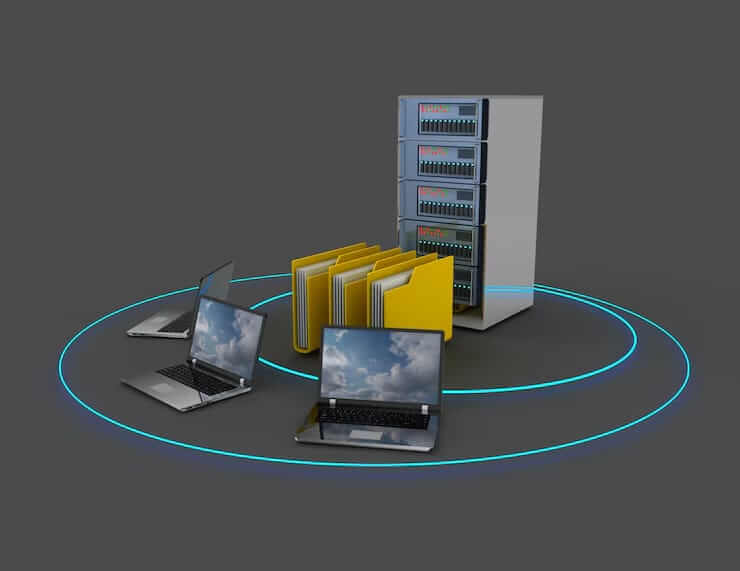Summary
Explore the difficult global of RAID information storage structures and the vital importance of safeguarding towards facts loss. In this manual, we delve into five common causes of RAID data Loss and unveil Stellar’s revolutionary solutions tailored to mitigate dangers and facilitate strong records healing. From hardware disasters to human mistakes and environmental elements, discover how proactive measures and professional interventions can safeguard your useful facts property and ensure uninterrupted enterprise operations.
Let’s delve into the definition of RAID, as it’s fundamental to knowledge the intricacies of statistics garage systems.
What is RAID?
RAID, which stands for Redundant Array of Independent Disks, is a Garage era that combines multiple bodily disk drives into a single logical unit for advanced overall performance, fault tolerance, and information safety. By distributing records throughout multiple drives and enforcing numerous RAID levels, along with RAID zero, RAID 1, RAID 5, and RAID 10, RAID configurations provide elevated storage potential, more desirable data redundancy, and faster get admission to speeds. RAID systems are normally utilized in servers, NAS gadgets, and agency storage answers to make certain information reliability and availability.
Now that we recognize RAID era, allow’s delve into the factors that can make contributions to RAID failure.
Common Causes of RAID Failure
- Hardware Failures: Components together with difficult disk drives (HDDs), RAID controllers, and energy components can malfunction due to put on and tear, production defects, or physical damage.
- Human Errors: Accidental record deletion, mistaken RAID configuration modifications, or formatting the wrong pressure can result in information loss on RAID structures.
- Software Corruption: File Gadget corruption, running machine mistakes, viruses, or incompatible software program installations can compromise information integrity in the RAID array.
- RAID Configuration Issues: Improper RAID stage configurations, mismatched power capacities or kinds, and neglecting preservation can bring about facts loss and degraded overall performance.
- Natural Disasters and Environmental Factors: Floods, fires, strength outages, temperature fluctuations, and physical vibrations pose extensive threats to RAID structures, potentially leading to hardware harm and information loss.
Stellar’s Solutions for RAID Data Recovery
Stellar, a depended on provider of information healing and control solutions, offers various specialized services designed to tackle RAID information loss correctly. Here’s how Stellar’s offerings can enhance RAID data protection:
- Cutting-Edge Recovery Tools: Stellar gives advanced software program geared up with effective tools to fast get better misplaced facts from RAID systems, minimising downtime and ensuring statistics accessibility.
- Expert Recovery Services: With skilled technicians and contemporary centres, Stellar provides expert
- data recovery services Tailored for RAID setups, capable of managing even complex data loss scenarios.
- Customised Recovery Plans: Stellar crafts custom recovery plans to shape the unique requirements of each RAID configuration, ensuring green and a success data healing.
By leveraging Stellar’s answers, companies can mitigate dangers, safeguard vital information, and keep the reliability in their RAID structures.
Strategies to Prevent RAID Failure
- Regular Maintenance: Conduct recurring checks on hardware components inclusive of tough drives, RAID controllers, and energy materials to become aware of and deal with capability troubles before they escalate.
- Backup Data Regularly: Implement a strong backup approach to often again up crucial records saved on RAID structures to split garage devices or cloud offerings.
- Proper Configuration: Ensure RAID configurations are set up successfully, matching power capacities and brands, and periodically overview and replace configurations as wished.
- Implement Monitoring Tools: Utilize RAID management software program or tracking tools to proactively screen RAID fitness, perceive anomalies, and take set off movement to save you disasters.
- Environmental Control: Maintain most efficient environmental conditions, which include temperature and humidity levels, to mitigate the danger of hardware damage caused by herbal disasters or environmental elements.
- Employee Training: Provide comprehensive training to employees chargeable for managing RAID systems to minimise the threat of human mistakes inclusive of unintentional statistics deletion or misconfiguration.
- Use Quality Hardware: Invest in super hardware additives and RAID systems from professional manufacturers to reduce the probability of hardware disasters and make sure reliability.
By enforcing these preventive measures, enterprises can appreciably reduce the chance of RAID failure and shield their critical records property.
Conclusion:
In conclusion, safeguarding the data integrity within RAID systems stands as a paramount priority for businesses and organizations alike. Stellar’s comprehensive RAID data recovery services offer a crucial lifeline in the face of RAID data loss incidents, guaranteeing maximum data retrieval with minimal downtime. By integrating Stellar’s specialized RAID data recovery services with proactive measures such as regular maintenance and robust backup strategies, organizations can bolster their defenses against RAID failure and safeguard critical data assets effectively. This holistic approach, fortified by Stellar’s RAID data recovery services, not only mitigates risks but also cultivates resilience, empowering businesses to sustain uninterrupted operations and uphold the integrity of their RAID systems amidst the ever-evolving challenges of data management and security.



